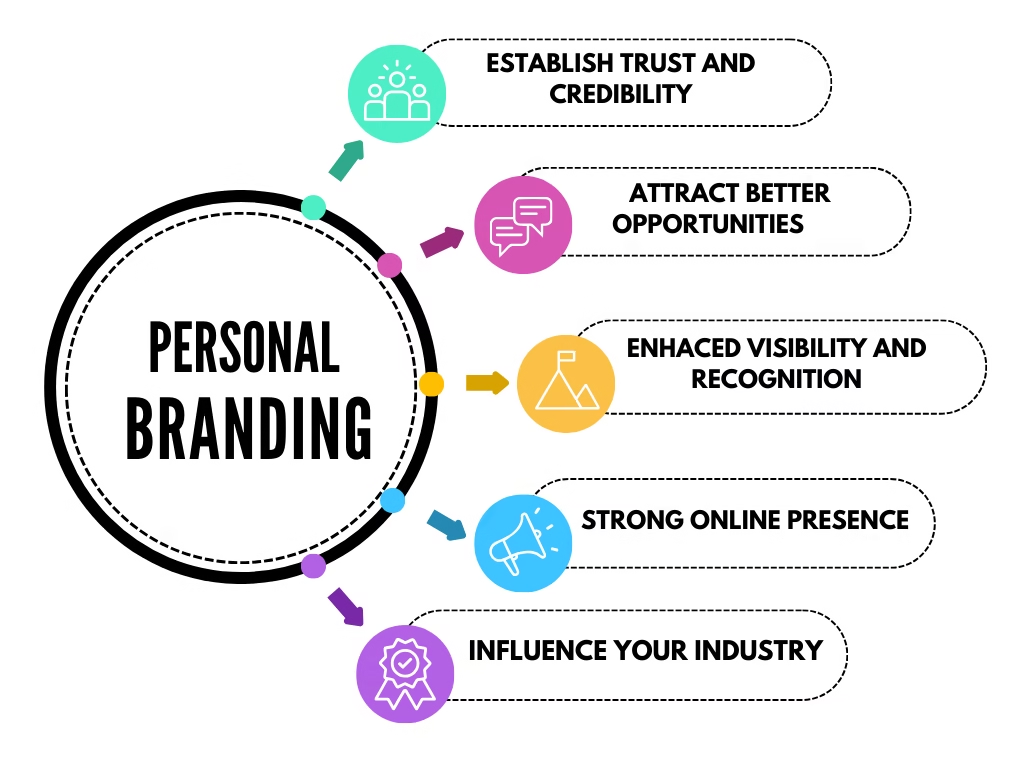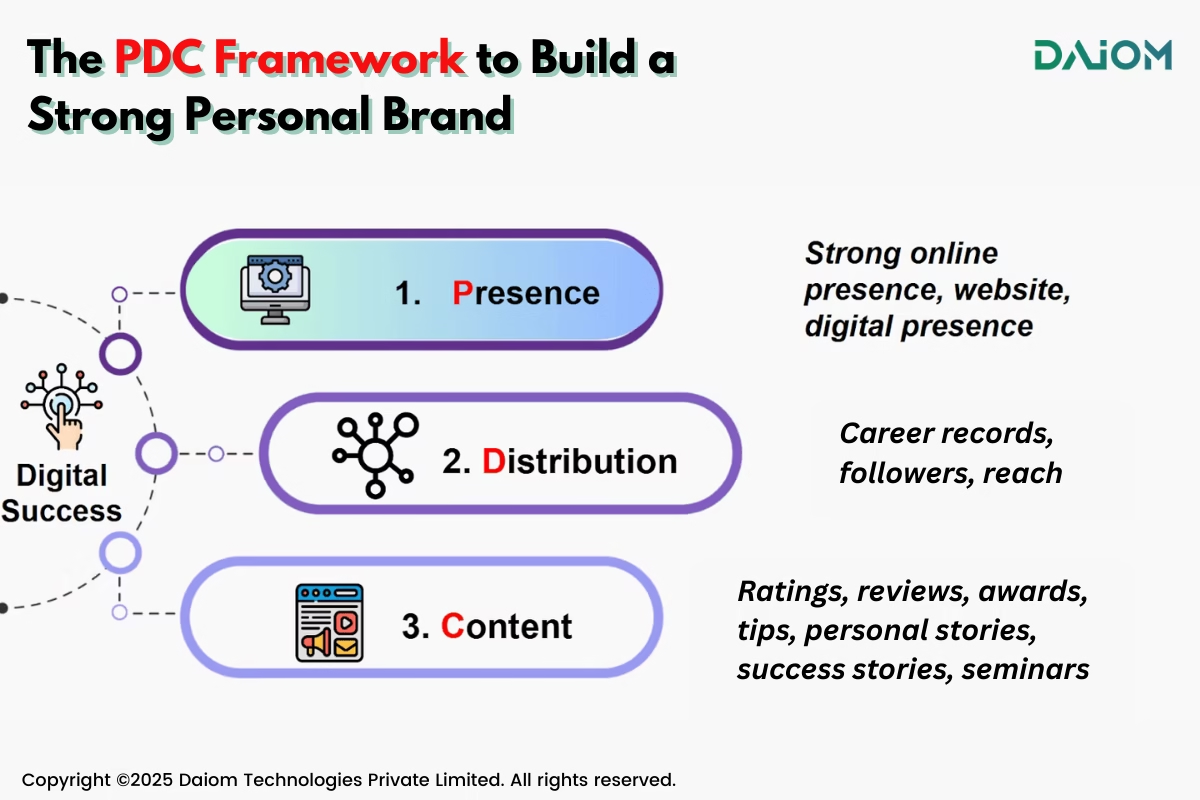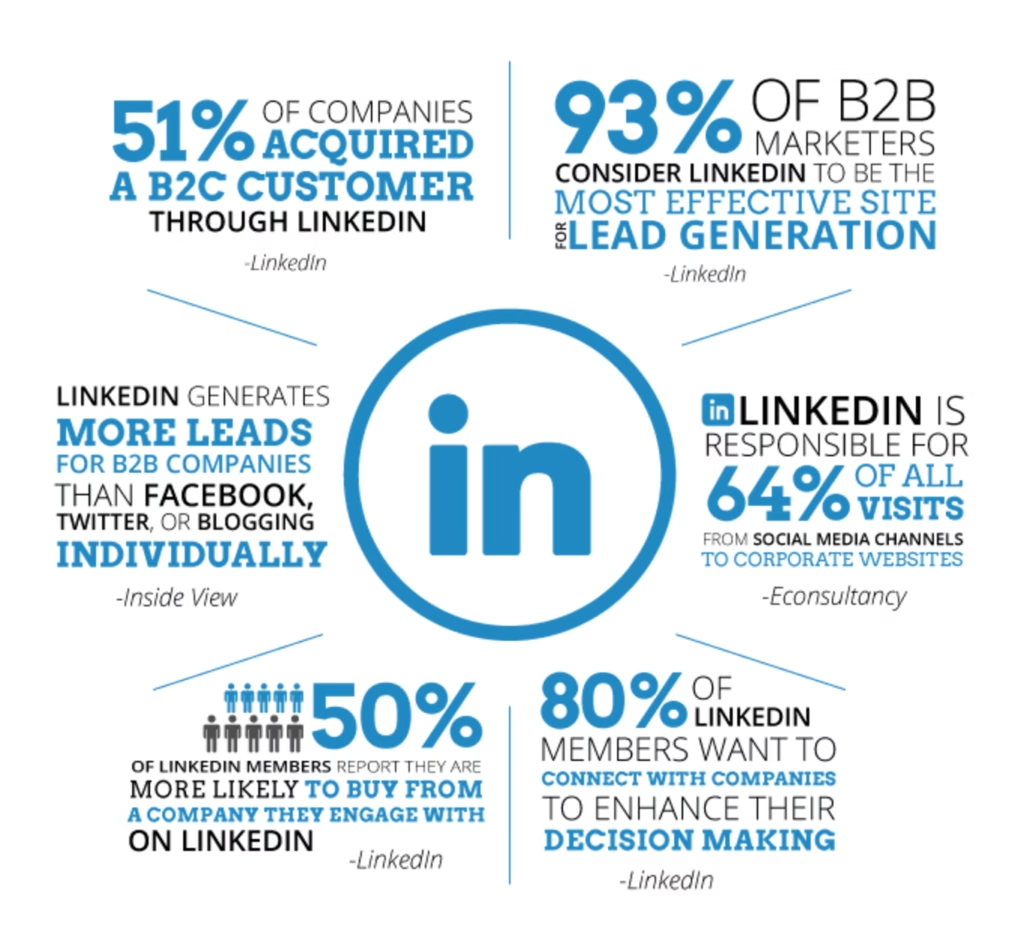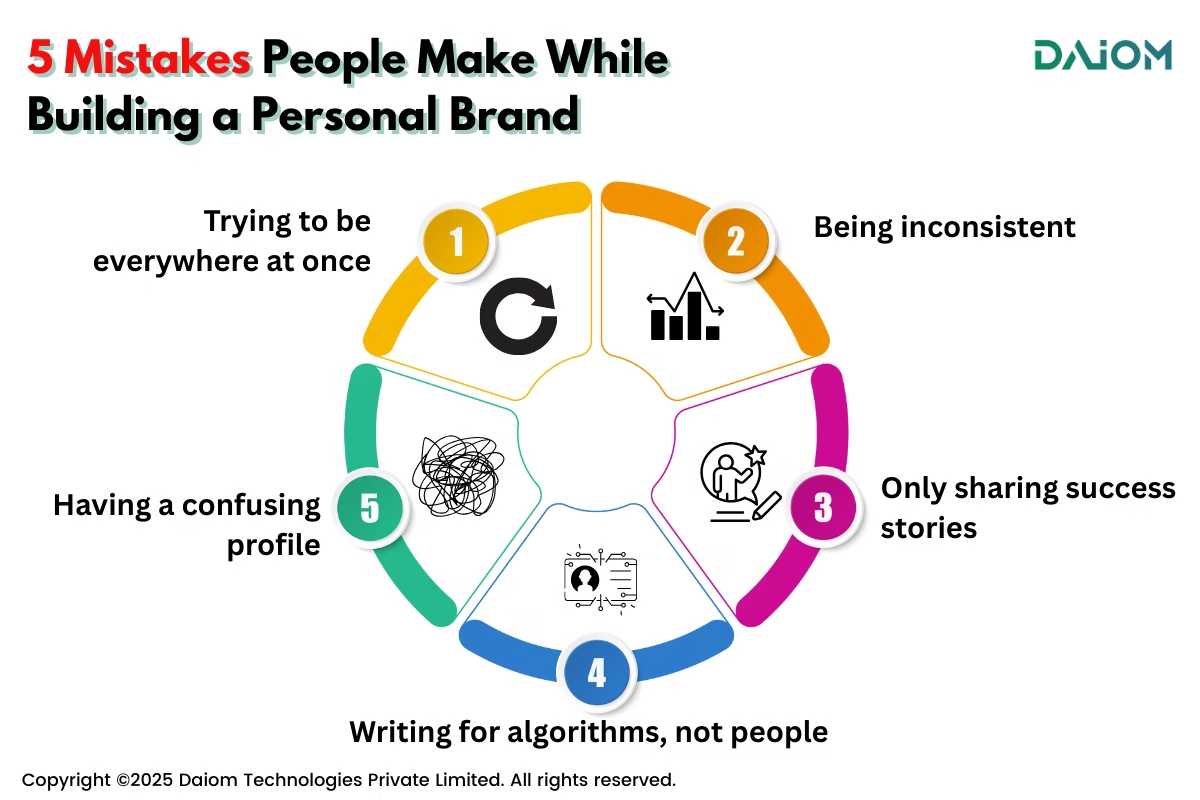About 7–8 years ago, my leader gave me a piece of advice: you need to work on your personal brand. At the time, I didn’t fully understand what that meant.
But being someone who has always thought digital-first, I started exploring how to build a strong personal brand and online presence. Blogging and writing articles were options—but LinkedIn felt like the most relevant platform for professional growth.
Over time, LinkedIn has done more than just help me find great jobs. It’s helped me connect with inspiring people, grow my network, and even reach out to individuals who later became clients of DAiOM.
In this blog, I’m sharing my journey, key lessons, and how I’ve come to understand digital brand building—especially through LinkedIn. I’ve also taken several courses along the way, and I hope you find something useful here for your own journey.
“Your personal brand is what people say about you when you're not in the room.”
— Jeff Bezos, Founder of Amazon
Table of Contents
1. Why Personal Branding Matters Now More Than Ever?
There was a time when resumes were the main way to showcase your work. But today, things have changed. A recruiter may take a look at your resume for a minute or two—but they’ll spend much more time on your LinkedIn profile. They want to see your real work, your journey, your thoughts, and how others talk about you.
That’s where personal branding makes a big difference.
Let me share one of my personal experiences:
While hiring for a role not long ago, I came across a candidate whose resume said he was a Python developer.
But when I checked his LinkedIn, it turned out he was actually working as a web developer. That’s when I thought—while a resume lists your roles and skills in a static, one-size-fits-all format, your LinkedIn profile actually shows what you do.
It reflects your journey in real time—your projects, content, endorsements, career shifts, and even how you talk about your work.
LinkedIn has become your living, social proof. It shows what you really do, how you speak about your work, and what others say about you. For senior roles especially, hiring decisions are no longer just about qualifications—they’re about presence. And personal branding plays a huge role in that.
So, it doesn’t matter whether you’re a fresher, a consultant, a marketer, or a founder — your personal brand speaks before you do.
When you share your learnings, write about your experiences, or speak at events, people remember you. It builds visibility and trust. You’re not just showing what you’ve done—you’re showing how you think and what you care about.

Whether you’re a student, a freelancer, or in a senior role—your personal brand speaks before you do. If people know you, trust you, and see value in your content, they’re far more likely to hire, recommend, or collaborate with you.
2. The PDC Framework to Build a Strong Personal Brand
When it comes to building a strong personal brand, there are three key things to focus on—your Presence, your Distribution, and your Content. I’ve been following this simple framework for a few years now, and it’s helped me stay consistent, build trust, and grow the right kind of visibility.

Let’s break each of these down.
2.1. Presence
When we talk about presence today, it includes your LinkedIn, social media, blog, and every digital touchpoint where people can discover you. It’s your digital footprint—the first impression you leave online.
The way to get started is by building distribution—there are multiple strong channels you can use to build visibility. But, the key is picking one and going deeper into it. That’s where momentum begins.
This could be your LinkedIn profile, personal website, event pages, guest articles, podcasts, or any community platform where your name appears. Ask yourself these questions:
- It’s the first step in making sure you’re findable.
- If someone Googles your name, what shows up?
- Does your LinkedIn have a clear summary?
- Does it tell people what you do in a simple way?
- Does your profile picture, banner, and headline make you look professional and approachable?
That’s where you start. Because if people can’t find you, they can’t trust you. And if they can’t trust you, they won’t work with you.
2.2. Distribution
Now that you have an online presence, the next step is distribution. Distribution is simple: it’s how far your message can go.
- When you post something on LinkedIn, how many people see it?
- When you share an insight or idea, how many people engage?
- When you speak at an event, how many people hear you?
You don’t need to have 100,000 followers. You just need the right 1,000 people to know what you do. Your distribution grows when:
- You show up regularly online
- You engage with others’ content
- You collaborate with communities
- You speak at webinars or podcasts
Every small interaction helps build awareness. And over time, people start associating your name with your space.
2.3. Content
When it comes to content, one of the most important things is to clearly define your content pillars. What will you talk about?
It could be your skills, your learnings, leadership lessons—whatever feels authentic to you. But the key is to pick two or three and go deep. That’s how you start building a strong personal brand.
Once you’re clear on what you stand for, it becomes easier to create consistently and build recall. This can include:
- Tips you’ve learned in your job
- Mistakes you made and how you fixed them
- Reviews and testimonials from clients or colleagues
- Videos or photos from events you spoke at
- Screenshots of results you achieved
- Reposts of industry insights with your own take
You don’t have to write perfect posts. You don’t need viral content. You just need to show up consistently and share things you genuinely believe in. Over time, good content will bring reach. Reach will bring opportunities. And those opportunities will grow your personal brand.
3. Why Is LinkedIn One Of The Most Powerful Channels Which Brands Can Focus On?
Almost 10 years ago, I was stuck in my corporate career. I remember being given a piece of feedback that completely changed how I approached my work.
One of my leaders said to me, “You’re doing great work, but only people inside the company know you. If you want to grow, you need to build your personal brand—let people outside know the value you bring.”
That stayed with me.
I started small—public speaking sessions, blog writing, and slowly experimenting with LinkedIn. Over time, I realised something important: there are many ways to build visibility, but the most effective one for me was LinkedIn.

It allowed me to go deep, consistently show what I stood for, and most importantly, attract the right people who resonated with my work.
Today, I think of digital presence as more than just “posting on social media.”
Your real presence is a mix of four or five things—your LinkedIn, your blog, public speaking, social media, and how you distribute your thinking online.
But what matters most is going deep in one channel. That’s how real momentum builds.
We use a simple framework at DAiOM called PDC—Publish, Distribute, Convert.
It helps us and our clients build visibility in a focused way. And we believe LinkedIn plays a powerful role in the “Distribute” part of that.
When I started DAiOM, I applied the same idea—build and distribute your thinking publicly. That’s what brought us early customers, and even now, it’s what drives organic traffic to our blogs and helps us stay visible.
So no matter what you’re building—start putting it out there.
Start with your blog. Share it on LinkedIn. Let people see what you believe in.
Because what’s not seen, doesn’t scale.
There’s a popular quote by Porter Gale:
“Your network is your net worth.”
But today, it’s not just about who you know. It’s about who knows you.
And what they remember you for. If 50 people in your industry think of you when a project comes up, that’s way more powerful than a line on your resume.
4. 5 Mistakes People Make While Building a Personal Brand
Building a personal brand isn’t just about being active online—it’s about being consistent, intentional, and clear. But many people get stuck or lose momentum because of a few common mistakes. Avoiding these small mistakes can make a big difference:

- Trying to be everywhere at once: Many people try posting on every platform—LinkedIn, Instagram, Twitter, Threads—at the same time. But it quickly becomes overwhelming. Instead, pick one platform, build your voice there, and grow steadily.
- Being inconsistent: You don’t need to post every day, but disappearing for weeks or months hurts your visibility. When people see you often, they start remembering you. That’s how recall is built.
- Only sharing success stories: A profile that’s full of success stories but no failures or learnings can feel unrealistic. People connect more when you share the journey—not just the highlight reel.
- Writing for algorithms, not people: Chasing likes with common buzzwords might get you reach, but it rarely builds trust. Your content should sound like you and speak to real people, not just the algorithm.
- Having a confusing profile: If someone visits your LinkedIn and can’t quickly understand what you do or who you help, they’ll lose interest. Your headline, summary, and photo should clearly reflect your work and personality.
5. Conclusion
When we started building our presence, one of the first platforms we focused on was LinkedIn — and it’s been one of the most effective for visibility and distribution.
Why LinkedIn?
Because that’s where the professional world spends time.
It has over 1 billion members globally, and 120 million+ in India alone — making it the second-largest market after the U.S.
If you’re in a professional space — whether you’re hiring, mentoring, building your brand, or just sharing ideas — LinkedIn is no longer optional. It’s where people look you up, form impressions, and decide whether to engage with you.
That’s why starting early on LinkedIn can be a smart move. The compounding effect of consistency often speaks for itself.
If this inspired you, let’s stay in touch. Drop me a message or connect on LinkedIn or reach out at saurabh@daiom.in
Watch the video summary in the video below to dive deeper into these ideas.
For more informative content and blog, follow and stay tuned to DAiOM.
Subscribe to our NEWSLETTER!


